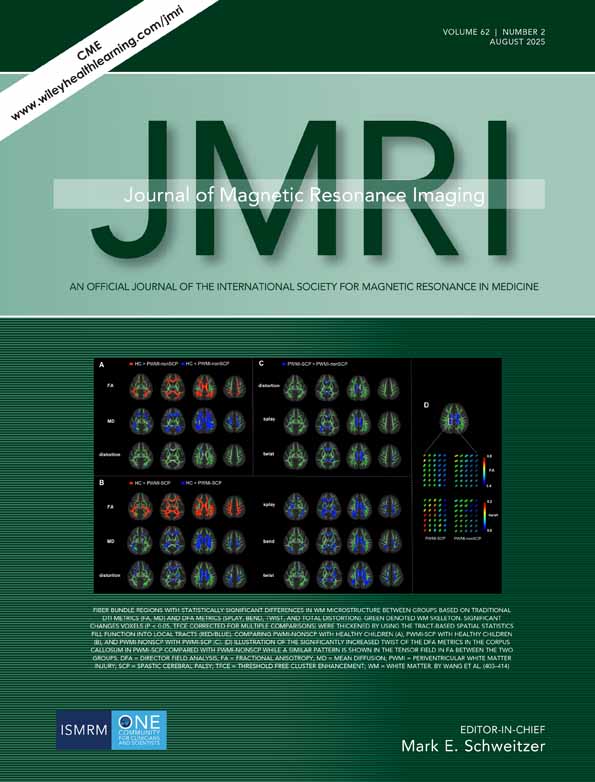Echo-train STIR MRI of the liver: Comparison of breath-hold and non-breath-hold imaging strategies
Abstract
The purpose of this study was to evaluate echo-train short inversion-time inversion recovery (STIR) sequences and compare the results obtained with breath-hold and non-breath-hold imaging strategies. Forty-one patients referred for hepatic magnetic resonance were imaged with both a breath-hold STIR (BH-STIR; acquisition time [TA] 16–20 seconds × 2) and a non-breath-hold STIR (NBH-STIR; TA 210–256 seconds). Quantitative analysis of the liver, spleen, and up to five hepatic lesions per patient was performed. Three blinded readers recorded the number of focal lesions depicted by each study and qualitatively evaluated overall image quality, lesion conspicuity, and image artifacts. The BH-STIR had greater sensitivity (98.8% vs. 91.6%) for detection of hepatic lesions than the NBH-STIR. The BH-STIR was statistically superior in four measures of image quality and had fewer image artifacts. The NBH-STIR images had statistically higher signal-to-noise (S/N, P < 0.001) and liver-lesion contrast-to-noise (C/N, P = 0.005) ratios. For the evaluation of focal hepatic lesions, a breath-hold echo-train STIR sequence provided superior overall image quality and allowed for detection of more lesions in a shorter amount of time than a non-breath-hold echo-train STIR sequence. J. Magn. Reson. Imaging 1999;9:87–92 © 1999 Wiley-Liss, Inc.




